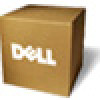Dell Powerconnect W-ClearPass Hardware Appliances W-ClearPass Policy Manager 6 - Page 64
Subnet Scan
 |
View all Dell Powerconnect W-ClearPass Hardware Appliances manuals
Add to My Manuals
Save this manual to your list of manuals |
Page 64 highlights
The following additional settings have been introduced for Profile support: l Read ARP Table Info - Enable this setting if this is a Layer 3 device, and you want to use ARP table on this device as a way to discover endpoints in the network. Static IP endpoints discovered this way are further probed via SNMP to profile the device. l Force Read - Enable this setting to ensure that all CPPM nodes in the cluster read SNMP information from this device regardless of trap configuration on the device. This option is especially useful when demonstrating static IP-based device profiling because this does not require any trap configuration on the network device. Figure 36: SNMP Read/Write Settings Tabs In large or geographically spread cluster deployments you do not want all CPPM nodes to probe all SNMP configured devices. The default behaviour is for a CPPM node in the cluster to read network device information only for devices configured to send traps to that CPPM node. Subnet Scan A network subnet scan is used to discover IP addresses of devices in the network. The devices discovered this way are further probed using SNMP to fingerprint and assign a Profile to the device.Network subnets to scan. Subnets to scan are configured per CPPM Zone. This is particularly useful in deployments that are geographically distributed. In such deployments, it is recommended that you assign the CPPM nodes in a cluster to multiple "Zones" (from Administration > Server Configuration > Manage Policy Manager Zones) depending on the geographical area served by that node, and enable Profile on at least one node per zone. Figure 37: Configuration > Profile Settings 64 Dell Networking W-ClearPass Policy Manager 6.0 | User Guide















